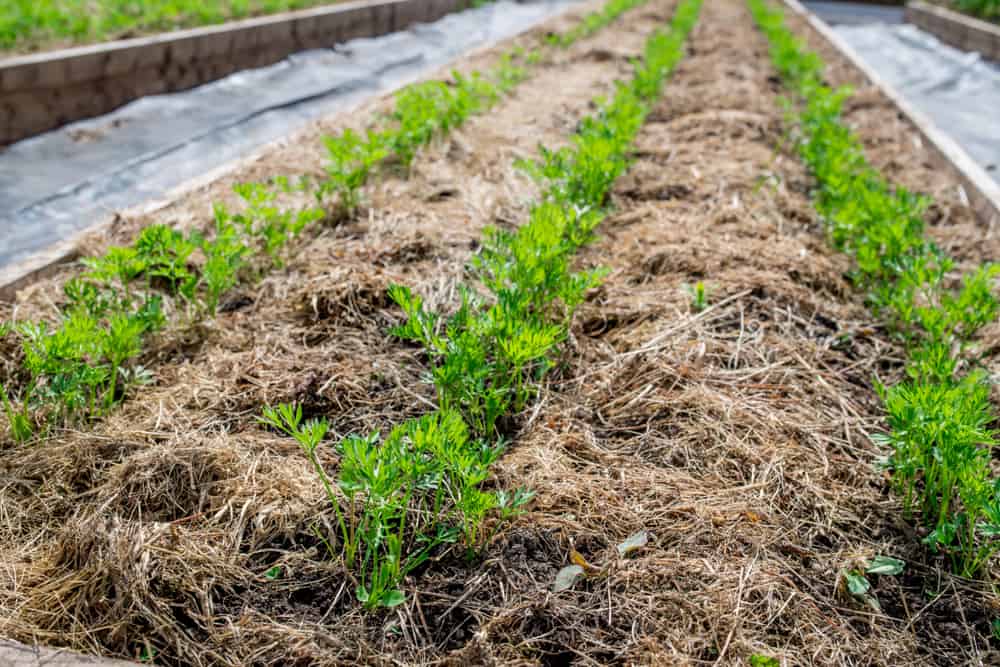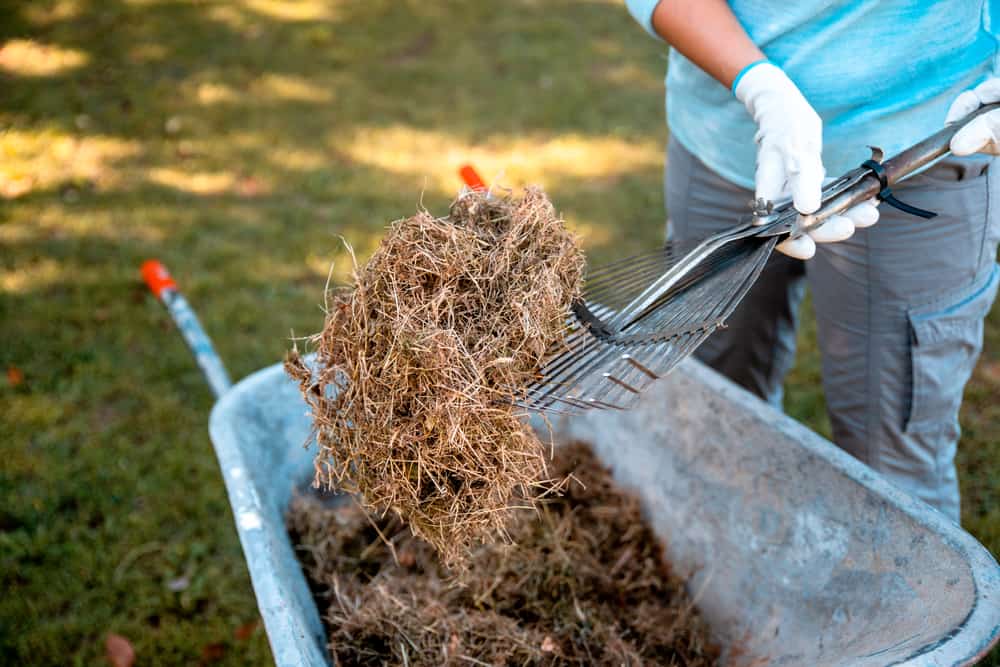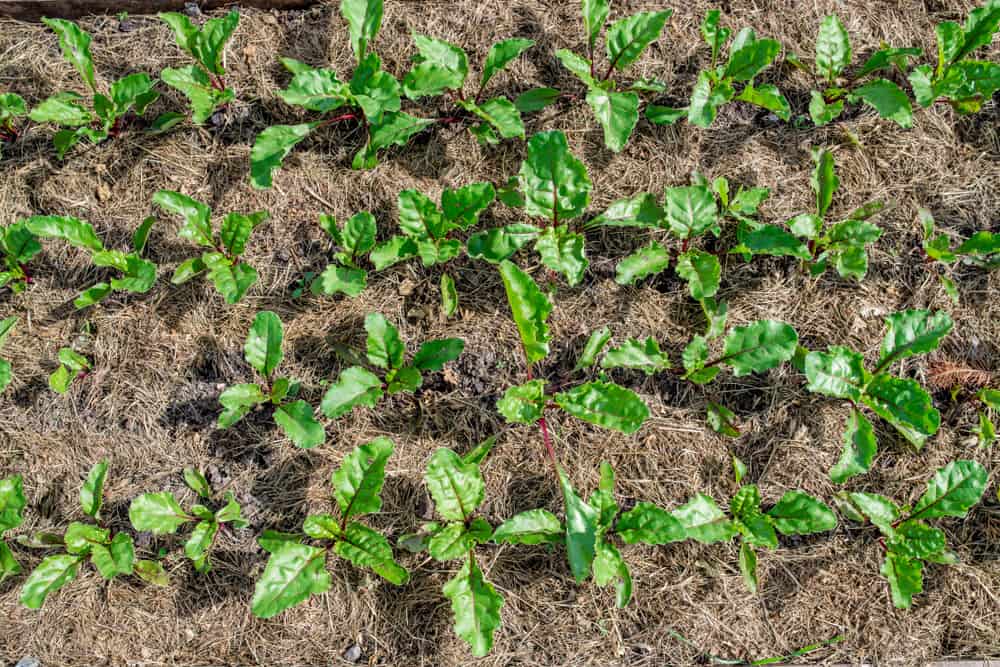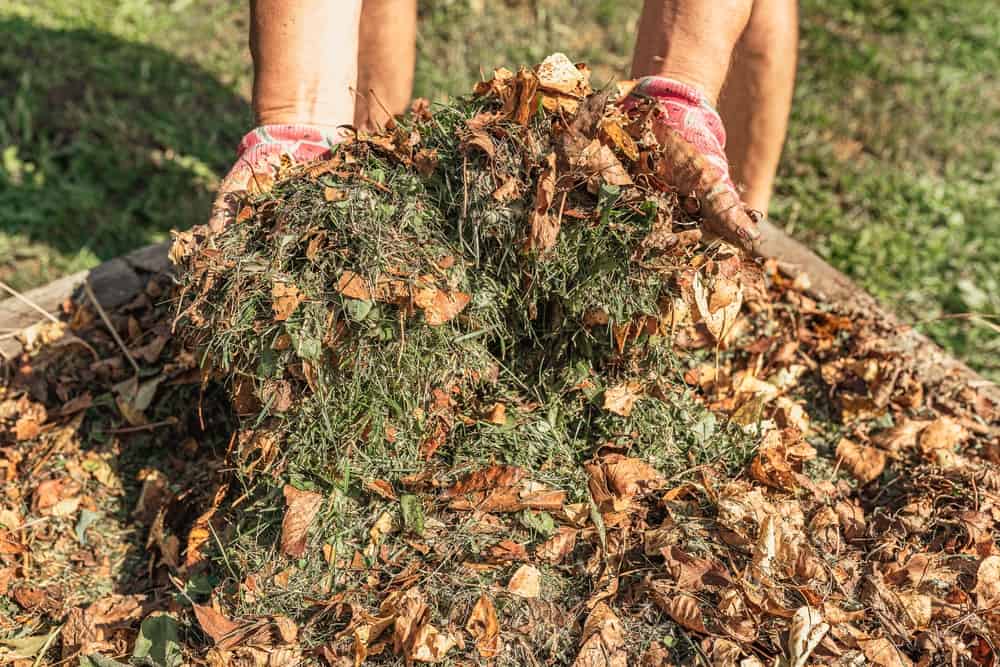Imagine transforming your garden with something as simple as the grass under your feet. As you mow your lawn, a hidden treasure accumulates – grass clippings.
Join us on a journey to master the art of mulching with grass clippings. Learn the dos and don’ts, the advantages, and the little-known secrets to make your garden not just survive, but flourish.

Benefits of Grass Clippings as Mulch
When you mow your lawn, you’re creating a fantastic resource for your garden. Grass clippings can be more than just waste; they have several benefits when used as mulch.
- Moisture Retention: Grass clippings help the soil underneath stay moist. By spreading a layer of grass clippings over your garden, you’re reducing the need for frequent watering, which is particularly useful during the hot Aussie summer.
- Nutrient Recycling: As grass clippings decompose, they release nutrients back into the soil. This process can replace up to a quarter of the nutrients that the growth of plants removes.
- Weed Suppression: Applying grass clippings as mulch can effectively suppress weed growth. This means you’ll be spending less time weeding and more time enjoying your garden.
- Temperature Control: A layer of clippings can insulate plant roots from extreme temperatures, keeping the ground cooler in summer and warmer in winter.
- Environmental Benefit: By using your grass clippings, you’re recycling organic matter and reducing waste. There’s no need to buy mulch when you’ve got your supply being regularly replenished.
How to Use Grass Clippings as Mulch

Grass clippings can be a sustainable and nutrient-rich addition to your garden as mulch, here is how to get the most out of your green waste after mowing:
- Ensure Lawn is Chemical-Free: Before collecting clippings, make sure your lawn is free from chemical treatments to protect your garden plants.
- Mow When Dry: Mow your lawn when it’s dry. This helps in preventing the formation of clumps in the grass clippings.
- Spread Clippings Evenly in Garden Beds: Distribute a layer of grass clippings around your plants in the garden beds. Keep the layer about 2.5 cm thick to ensure sufficient airflow and prevent matting.
- Leave Space Around Plants: When applying clippings, avoid piling them directly against plant stems or tree trunks. Leave a small gap to prevent issues like rot and pest infestation.
- Add Fresh Clippings Regularly: As the layers of clippings decompose, replenish them every few weeks. This maintains the mulch layer and continues to nourish the soil.
Comparison with Other Types of Mulch
When you’re considering using grass clippings as mulch in your garden, it’s helpful to see how they stack up against other mulching options. Let’s take a peek:
- Grass Clippings: They’re great for adding nutrients back into your soil since they’re high in nitrogen. Plus, they’re free if you’re mowing your lawn anyway. However, remember they decompose quickly and might need frequent replenishment.
- Straw: is great for insulation from extreme temperatures and improving soil structure but lacks the nutrient richness of grass clippings. In most areas, Straw is a cheap option for mulch but you will need to watch out for seeds and pests.
- Bark Chips are aesthetically pleasing and long-lasting, making them suitable for ornamental gardens and pathways. However, they can be costly and don’t provide much benefit in the way of adding nutrients to the soil.
| Mulch Type | Moisture Retention | Weed Suppression | Soil Nutrition | Aesthetic Appeal | Cost |
|---|---|---|---|---|---|
| Grass Clippings | High | Moderate | High | Low | Free |
| Straw | Moderate | Moderate | Medium | Moderate | Moderate |
| Bark Chips | Low | High | Low | High | Moderate |
Appropriate Timing for Mulching

When you’re considering using grass clippings as mulch, timing is key to ensure you get the best results for your garden.
Here’s what you need to know to make the timing perfect:
For Warmer Climates:
- Spring: Begin mulching in late spring, as temperatures rise and you start mowing your lawn more frequently. This is when your garden beds will benefit from the added moisture retention during the upcoming hot months.
- Summer: Mulch can be applied throughout the summer, especially after mowing, to help protect your soil from the intense sun and to conserve water.
- Autumn: As the growing season winds down, a final application of mulch can help insulate your soil, keeping it healthy for the following spring.
For Colder Climates:
- Spring: Wait until the threat of frost has passed before adding grass clippings to your garden beds. This usually means mulching later in spring, compared to warmer regions.
- Summer: Just like in warmer climates, use clippings all through summer to maintain soil health and deter weeds.
- Autumn: Ensure you mulch before the first frost to protect root systems and enrich the soil as the clippings decompose over winter.
Remember to apply your grass clippings in thin layers to prevent them from matting and to allow them to decompose efficiently.
Keep an eye on the weather forecast as well. If you’re expecting a spell of rainy weather, it might be best to hold off on mulching to avoid clippings becoming smelly or mouldy.
Using this approach, you’ll find your garden retains moisture better, experiences fewer weeds, and has improved soil quality over time.
Potential Drawbacks to Using Grass Clippings for Mulch
While grass clippings can be beneficial as mulch, you should be aware of some potential drawbacks.
Firstly, if your lawn has been treated with herbicides, using your grass clippings as mulch could inadvertently transfer these chemicals to your other plants, potentially harming them.
This is especially important if you’re mulching in vegetable gardens or around young, sensitive plants.
Another issue is that grass clippings can sometimes form a thick mat that inhibits water penetration. This barrier can also restrict air movement, which is vital for the health of the soil and plant roots.
Additionally, there’s a chance of spreading weed seeds if the grass wasn’t mowed before the weeds went to seed.
Not only could this introduce weeds into your garden beds, but it could also make your weed management efforts more challenging.
Lastly, grass clippings can also be prone to developing an unpleasant odour as they decompose, especially when they are too wet. This can attract unwanted pests to your garden.
To maximise the benefits and reduce these drawbacks, it’s best to use dry clippings and apply them in a thin layer.
Remember, every garden is unique, so you might need to try and see how your garden responds to grass-clipping mulch.
Mitigating Issues

When you’re using grass clippings as mulch, you may come across a few hiccups. To ensure your garden stays on the right track, consider these simple yet effective solutions.
Preventing Matting:
Grass clippings tend to clump together when wet, creating a mat that impedes water and air from reaching the soil.
To avoid this, spread your clippings thinly and allow them to dry before applying, or mix them with coarser materials like straw or leaves.
Aim for a 2-5 cm depth of clippings, and let clippings sit for a day if possible to allow them to dry.
Avoiding Smell and Mold:
Damp clippings can develop an unpleasant odour and become mouldy. If you’re experiencing this issue, turning the mulch frequently will promote drying and avert mould growth.
Herbicide Residue:
If your lawn has been treated with herbicides, these can transfer to your garden beds. Check if the treatment is safe for the intended mulched area before applying.
If you are unsure, wait until the specified period on the product guide before using the clippings as mulch.
Nitrogen Drawdown:
Sometimes clippings can temporarily use up some of the soil’s nitrogen as they decompose. To counter this, you can add a nitrogen-rich fertiliser to balance the nutrients
Environmental Impact

When you use grass clippings as mulch, you’re participating in a sustainable gardening practice, helping to reduce your carbon footprint.
Unlike purchasing mulch, which often requires significant energy to produce, process, and transport. This practice has the following environmental benefits:
- Sustainability: Grass clippings are a by-product of lawn maintenance, so using them as mulch utilises what would otherwise be waste.
- Soil Health: As they break down, clippings can improve soil biology by adding organic matter.
- Water Conservation: Mulching with grass clippings helps with soil moisture retention, meaning less watering for your garden.
However, it’s important to mulch responsibly and ensure you use only untreated, disease-free clippings to avoid spreading issues to your plants.
Frequently Asked Questions
When you’re sprucing up your garden, knowing the ins and outs of using grass clippings can set your green space apart. Let’s tackle some of the most common queries.
What are the benefits and downsides of using grass clippings as mulch?
Utilising grass clippings as mulch is budget-friendly as they’re a free alternative to store-bought mulch. They can also encourage a more sustainable garden ecosystem. However, they tend to lack aesthetic appeal and might not be the best choice for every garden style.
Can you improve soil quality by mixing in grass clippings?
Absolutely! Grass clippings can enhance your soil by incrementally boosting its organic matter, leading to better soil structure and fertility. They’re a free source of nutrition that can help condition your soil.
How should grass clippings be disposed of responsibly?
You should aim to compost grass clippings when possible. This not only recycles the nutrients back into your garden but also prevents adding to landfill waste. If composting isn’t an option, check with your local council for green waste programs.
What’s the best method to apply grass cuttings as mulch in a veggie patch?
The key is to spread a thin layer of grass clippings around your plants, avoiding any direct contact with the stems. This helps to suppress weeds, conserves moisture, and gradually enriches the soil as they break down.
How effective are grass clippings as fertiliser for plants?
Grass clippings are fairly effective as they slowly release nitrogen—a crucial nutrient for plant growth—back into the soil. However, for targeted fertilisation, they shouldn’t be the sole source, as plants require a balance of nutrients.
Is it suitable to use fresh lawn clippings as mulch around flowers?
Fresh lawn clippings can be used around flowers but with caution. They should be dried out slightly to prevent matting and should not come into contact with the flower stems to avoid rot issues. It’s also wise to avoid using clippings from lawns treated with herbicides or pesticides.
